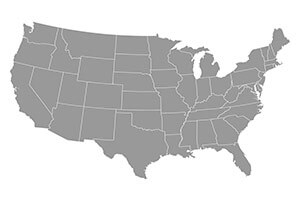
Our beekeeping lives continue to be affected by the COVID-19 pandemic. State and regional conferences have been mostly cancelled since about mid-March, and most local club meetings are either going online or not happening.
Otherwise, we’ve been busier than ever. Honey sales at the local level are higher than ever in many places. In the beginning it might have been due in part to the hoarding impulse on display in every emergency, but it continues unabated. People under stay-at-home orders are cooking more, and for health reasons many are eating healthier.
Not only that, but those who sell things to beekeepers are also crazy busy and struggling to keep up — not just because of staffing issues, but because everyone seems to want to be a beekeeper. These uncertain times are driving more folks to seek means of self-sufficiency like gardening, chickens and other forms of “homesteading” … including beekeeping.
To which we say: Welcome to the fold! Hope no one told you it was easy.
Northeast
It was a slow start in Pennsylvania, with a late-season frost followed by cool, rainy weather. But while the shortage of flying days slowed colony development early on, sunny weather brought a bumper crop of swarms in the Pittsburgh area, and prospects were good for the clover and basswood crops.
That wet weather, along with with the pandemic, kept most consumers out of farmers markets — some of which smartly responded by putting their offerings online, to be ordered ahead of time for pickup.
Imports continue to hurt wholesale prices, but retail sales are straining supply. One popular retail product is herb-infused honey in authentic muth jars.
New York saw late snow and a cold, rainy spring that put colonies about two weeks behind schedule. Still, prospects were good for black locust, basswood and knotweed. Retail sales of local honey are strong, and one reporter is running promotions for teachers and healthcare professionals.
Things also started slowly in New Hampshire, with an unusually cold April and early May. But basswood, black locust and sumac are expected to thrive. Local honey demand is exceptionally strong; the pandemic is driving consumers from large stores to local farm stores, where they’re stocking up on honey for baking and medical use.
Maine honey sales are also strong, after a two-year decline, as buyers prep for further isolation. Colonies are about 10 days behind in the east, but soil moisture is good.
Mideast
A late-May freeze in southern Kentucky made the poplar bloom spotty, but prospects looked good for linden, sourwood and blackberry.
Too much rain slowed down coloney buildup in Tennessee, and queen orders were also late.
Southeast
Dry conditions on the west coast of Florida knocked the orange blossoms back about 50 percent, and honey buyers have not yet been willing to come up on price. Timely rains in the north made for good gallberry, tallow and wildflower crops. Spring conditions are about average and retail demand for honey is good.
“People are buying everything off the shelves” in Georgia, though cheap imports are still depressing the wholesale market. Spring was cool and rainy here too, but upcoming crops like gallberry look good.
Cold and rain hurt early Alabama crops like mimosa and sumac, but privet hedge and clover are looking better. Coronavirus fears are boosting retail honey sales, and Facebook marketing is a plus.
Southwest
Weather has been cooperative in Louisiana, and privet and tallow flows look promising. Retail sales continue strong.
Retail demand is also strong in New Mexico, but things are not as good for beekeepers who cater to the larger retailers.
Spring was late in most of Texas, and dry to the south, but temperatures warmed up quickly in April and wildflower flows were good.
East Central
Wisconsin commercial beekeepers were concerned about COVID-related travel restrictions to and from the almond crop, but it turned out not to be a problem, as beekeeping is considered an “essential” industry. There is great demand for honey, and great demand for beekeeping supplies. With farmers markets closed, much of that demand has been met through online sales. One supplier to small markets reported that they would fill store shelves one day and be called to come back in the next day because the shelves were bare.
Unfortunately a shortage of sucrose led to high prices to beekeepers, causing many to switch to high fructose corn syrup. Some are also concerned about availability of miticides, most of which are produced overseas.
The Wisconsin Agriculture Department is now inspecting colonies only on a case-by-case basis, and shifting increasing interest to the state’s native pollinators.
Illinois beekeepers were optimistic after a mild winter, but spring in the north brought extreme temperature fluctuations and too much rain, so colonies have not built up well. The eastern region is somewhat better. As in other states, retail sales are strong at the small-market level, though a larger-scale producer says, “COVID shutdowns have killed our retail markets. Everything is closed.”
Farmers markets are also closed in Michigan, but retail demand is very strong, and online sales are rising. Winter surival was above average, and the outlook is promising for autumn olive, basswood and clover.
Indiana buildup is behind schedule, but plenty of rain bodes well for clover, basswood and locust. “Sometimes the slow years are the best years.” Retail demand has been good here too, but not so much on the wholesale side.
West Central
The dandelion bloom was average in


